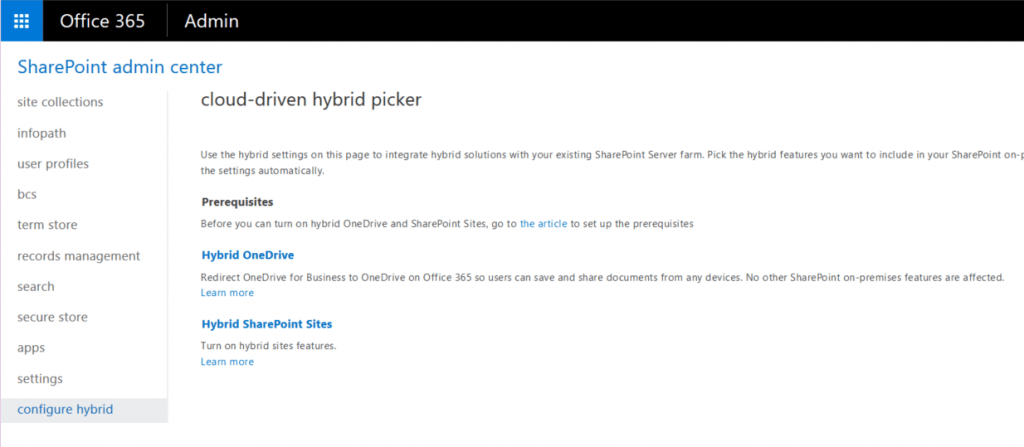4 Reasons Administrators Will Love SharePoint 2016

With the long-awaited arrival of SharePoint 2016, you’re probably considering an upgrade to Microsoft’s latest SharePoint offering – whether it’s on premises or in a hybrid scenario. But before you even think about migration, let’s take a look at some of the latest features in SharePoint 2016 that SharePoint admins will love:
Easy hybrid setup
Microsoft has made hybrid configuration in SharePoint much easier than ever before. As you can see in the screenshot, the admin center explicitly outlines the prerequisites for platform integration and hybrid setup. Simplified configuration means your users can quickly start taking advantage of great new features like Hybrid OneDrive for Business and Hybrid Cloud Search – and they can start working seamlessly in both environments.

MinRole
In SharePoint 2016, Microsoft also introduced MinRole, a new farm topology where each server runs a specific set of role-based services, and no other services are turned on. Although the MinRole server configuration does require more servers in a farm (the minimum is four, but eight servers is ideal for redundancy), it does provide a way for admins to avoid complete farm outages when Microsoft releases updates. AvePoint SVP of Product Strategy John Peluso explains MinRole’s architectural and performance implications in more detail in his post.
Zero-downtime patching
Taking a page out of SharePoint Online’s book, Microsoft came up with a way for administrators to run updates in SharePoint 2016 without having to take the entire farm offline: “zero-downtime patching”. Microsoft guarantees 99.9% uptime for Office 365, and zero-downtime patching helps admins take a step in that direction with on-premises or hybrid environments when managing SharePoint 2016.
Instead of taking an entire farm offline to perform upgrades, admins can do this in stages in SharePoint 2016 and reduce the impact of these updates on the business. How? It’s a combination of smaller update packages, backward compatibility, and MinRole. John Peluso takes a deeper dive into zero-downtime patching in a previous blog post.
Feature Packs
While SharePoint 2016 reinforces Microsoft’s commitment to on-premises customers, it also revealed that cloud innovations will continue to trickle down into SharePoint Server in the form of Feature Packs. According to the SharePoint team, this means admins won’t have to wait another three years for the next version of SharePoint Server. Even better – as Microsoft rolls these Feature Packs out, admins will be able to choose which features they want on premises.
What’s next?
Want to learn more about what’s new in SharePoint 2016? Sign up for our SharePoint 2016 Readiness Guide, which will arm you with all the resources you need to understand what’s changed, what to consider before upgrading, and how to ensure your migration is a success.
Kate was formerly a specialist on AvePoint's Corporate Communications team.




